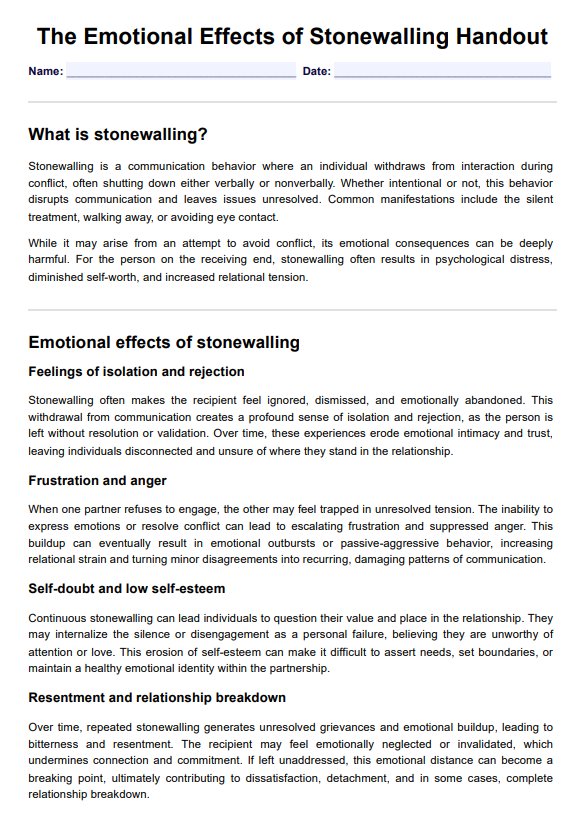Stonewalling creates emotional distance and undermines trust, often leaving the other person feeling rejected, invalidated, and emotionally unsafe. Over time, it can contribute to anxiety, depression, and breakdowns in emotional intimacy within the relationship.

The Emotional Effects of Stonewalling Handout
Download Carepatron's free PDF handout with an example to help identify and explain the emotional impact of stonewalling in patient relationship assessments.
The Emotional Effects of Stonewalling Handout Template
Commonly asked questions
The person being stonewalled may experience confusion, self-doubt, and chronic stress from the lack of emotional acknowledgment. This ongoing emotional neglect can harm their mental health and make it difficult to maintain a secure sense of self-worth.
Healing from stonewalling involves recognizing the pattern, seeking professional support, and rebuilding communication through emotional validation and boundary-setting. Therapy can help individuals process the impact and develop healthier ways to respond and connect.
EHR and practice management software
Get started for free
*No credit card required
Free
$0/usd
Unlimited clients
Telehealth
1GB of storage
Client portal text
Automated billing and online payments











